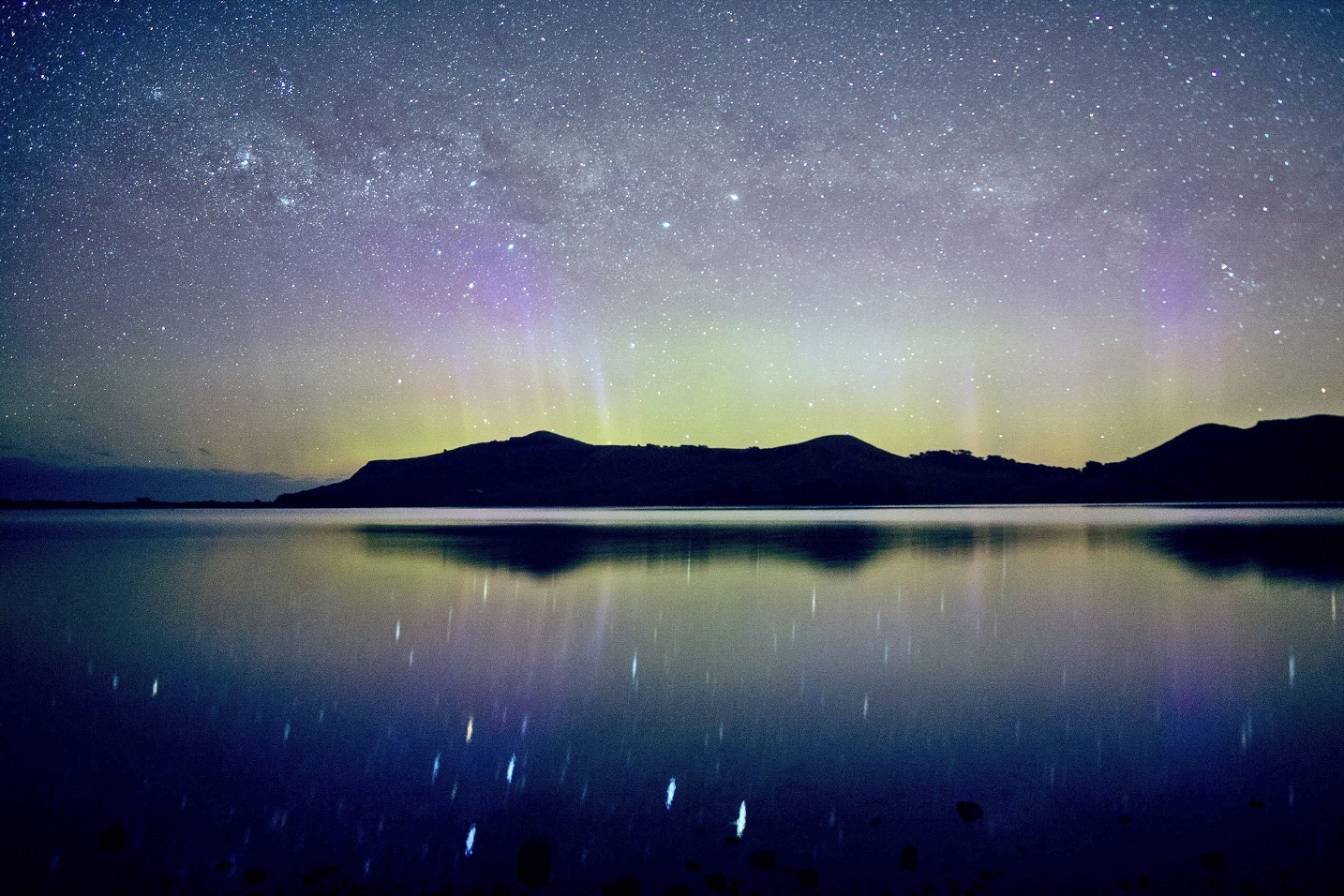
At precisely 10.47am, the sun reaches the southernmost point in its annual journey around the sky. As a consequence, Friday will be the longest day of the year. With sunrise at 5.44am and sunset at 9.29pm, Dunedin dwellers will doubtless enjoy 15 hours and 45 minutes of glorious sunshine.

When stargazing after sunset at this time of year, the Southern Cross and pointer stars are relatively low in the southern sky. Indeed, if you head out an hour after sunset, due south is directly between Alpha and Beta Centauri.
Some moons ago, I perched at the enchanting spot where the heavens meet Hoopers Inlet. The sky was adorned with a tender aurora that gracefully traced the contours of Sandymount's silhouette to the southern horizon. It was incredibly calm, with starry constellations mirror-kissing the inlet's obsidian depths, creating wonderous reflections on Hooper's liquid ebony stage. It was the kind of night that inspired flowery prose ...
Something else inspired by that memorable night were the photographs I took to try to capture the celestial beauty on display. When going through them, I discovered how much more vivid the colours of the stars were when reflected from the water. In particular, I was drawn to the contrast between the distinctly orange hue of Gamma Crucis and the blue hues of the other bright stars in the Southern Cross.
As an astronomer, I know that the colours of the stars tell us important information about their surface temperatures. Orange Gamma is cool, a mere 3200degC at its surface, whereas Alpha, Beta and Delta Crucis are blue because they are hot, each reaching more than 20,000 degrees at their surface.












